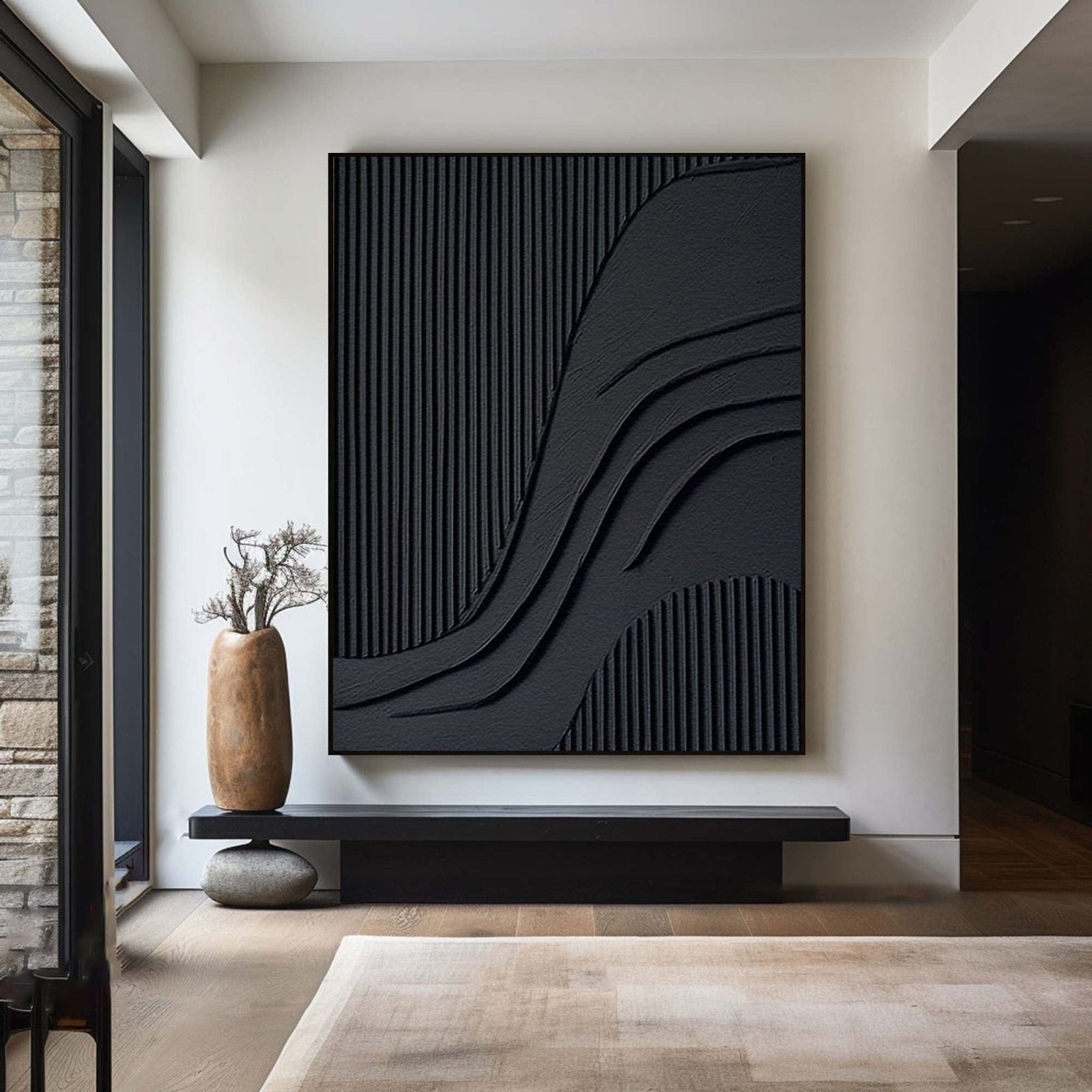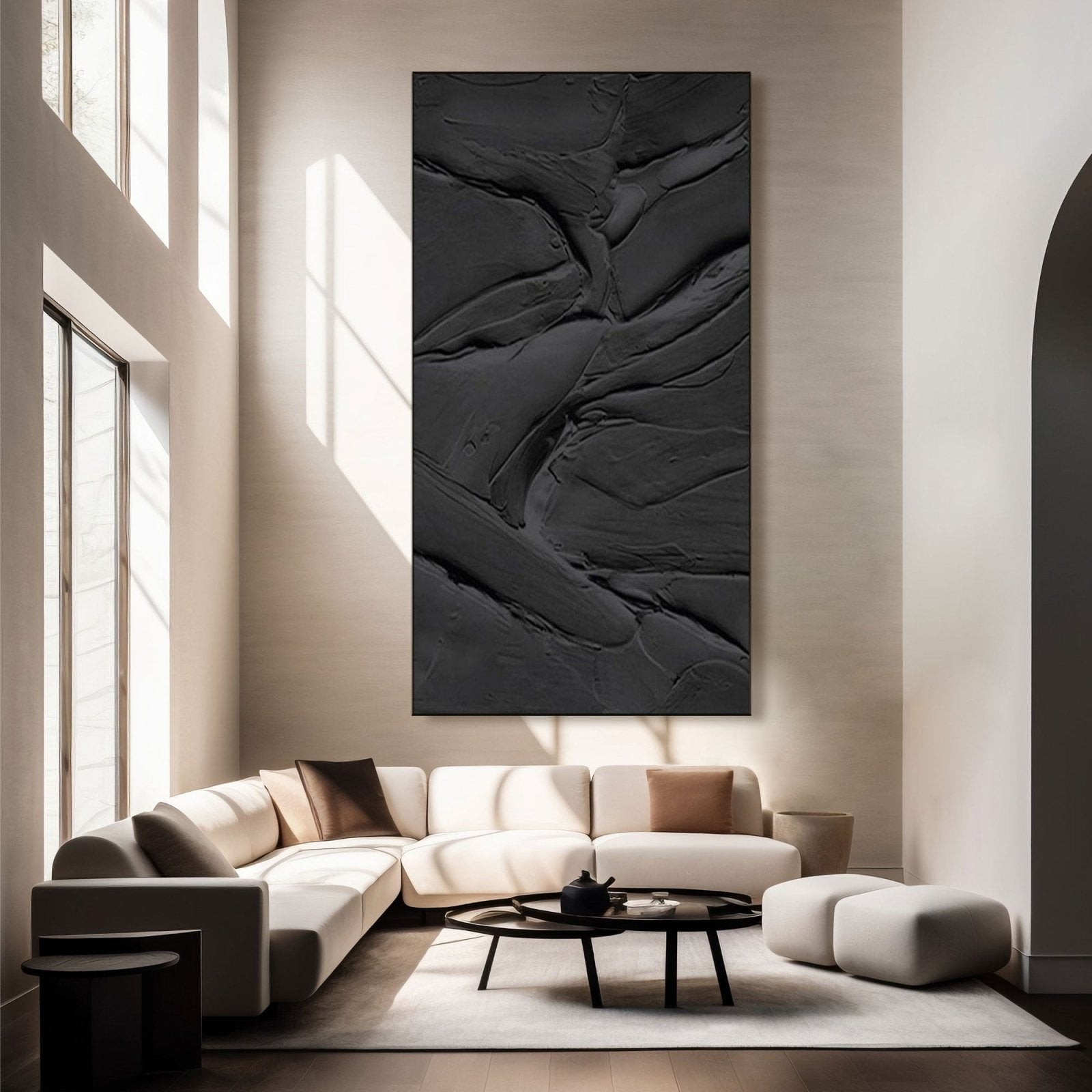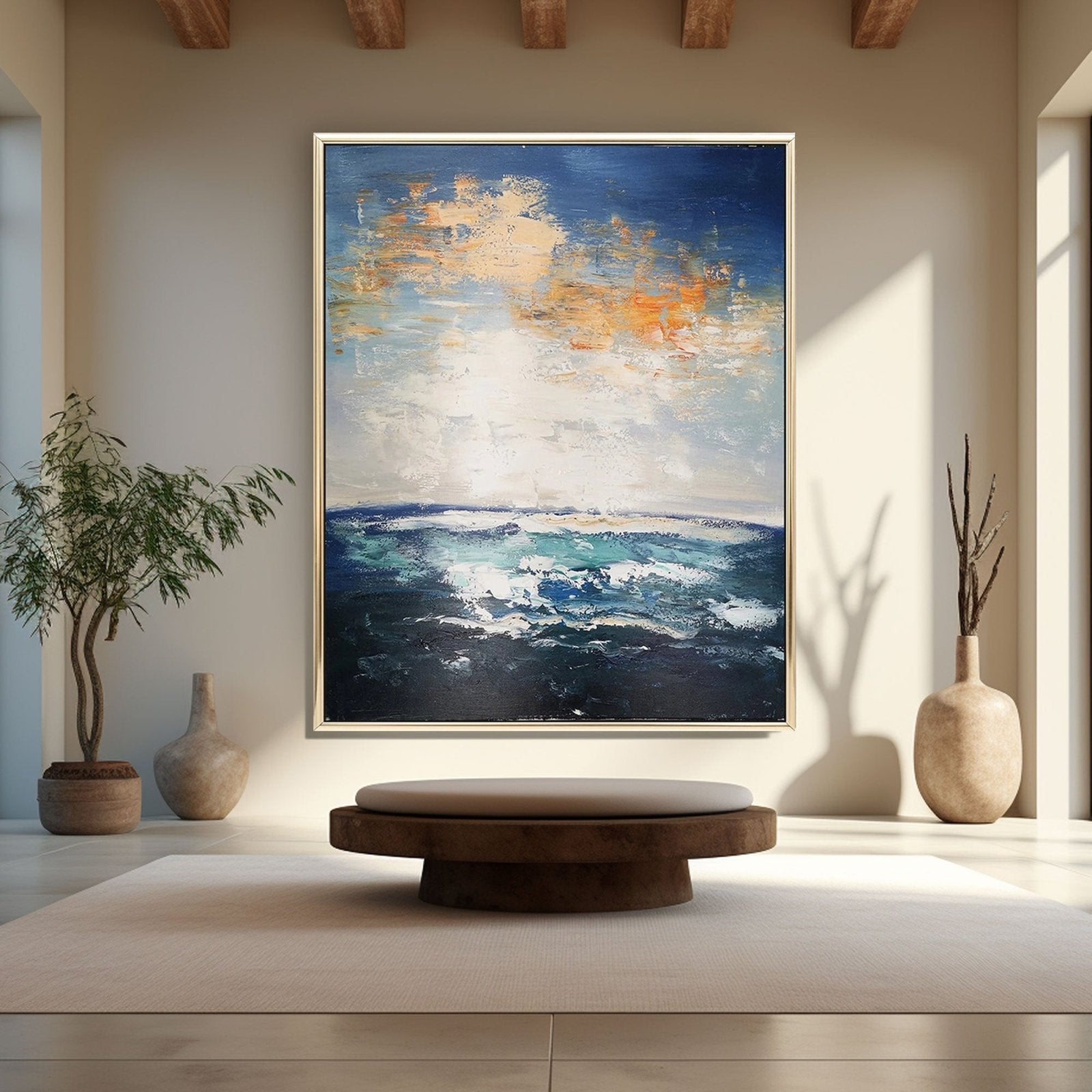
What are the Three Principles of Wabi-Sabi?
What is wabi sabi art? Wabi-sabi is a beautiful Japanese concept that describes things that are ugly, broken and incomplete as being beautiful. It originated from Zen Buddhism which teaches the people the acceptance of the imperfection of life.
Nukeart captures this idea and promotes the beauty of simplicity and natural elements while disregarding the standard structure and form of art. This makes Nukeart more than just a brand – it is revolutionizing the way art can be appreciated, ensuring that in the contemporary art and design, particularly the wall art and home décor, wabi-sabi enables people to create spaces that are calm, natural and genuinely special.
Applying the understanding of wabi-sabi texture painting on canvas, the creators and designers can achieve the conception of spaces that are not only harmonically connected with the surrounding world but also refer to the life experiences people acquire throughout their life process.
Understanding Wabi-Sabi
Define Wabi-Sabi: Wabi-sabi is a Japanese worldview of aesthetics that falls under Zen Buddhism and focuses on the aspects of object that are flawed or even incomplete. It embraces beginnings, middles, and ends and it embraces real, raw, untouched texture art.
Philosophical Background:
Wabi-sabi was discovered in old tea ceremonies of Japan – the flawed tea bowls, steeped in symbolism of wabi-sabi, became border on perfection as an artistic expression of redefining their relationship with their surroundings, as well as with the world and the time in general. In Zen inspired wabi-sabi culture, practices are focused on living in the moment and embracing the transience as is evident from its tenets.
Influence on Contemporary Design and Art:
Nowadays, wabi-sabi has come to define postmodernist aesthetics in design and art; as a part of the recent downshift movement, the ideas associated with wabi-sabi underpin handmade crafts, minimalist interiors, and sustainable architectural concepts. Wabi-sabi influences can be identified as esthetic ideals in today’s wabi sabi art and design as artists and designers aim to convey the feeling of tranquility and simplicity along with the understanding of the transformational nature of time.
Principle 1: Imperfection
Concept of Imperfection in Wabi-Sabi: Wabi-sabi is steeped in imperfection and it focuses on the beauty of defects and the beauty of decay, of impermanence. Wabi sabi focuses on art of imperfection wabi sabi because life is imperfect and unique and nothing lasts forever according to this school of thought.
Enhancing Beauty through Imperfection: This is true in the sense that the inclusion of flaws adds beauty since it comes with depth and character compared to flawless objects. Therefore, wabi-sabi looks at imperfections including cracks, asymmetrical features, as well as weathered surfaces as they provide a history of use and bring the past into the present.
Related Product: Wabi Sabi Painting Brown&Beige “ Roam”

Product: https://nukeart.com/products/wabi-sabi-painting-brown-beige
Exemplifying Imperfection: One of the pieces of art that was chosen for the Wabi Sabi collection is called “Wabi Sabi Painting Brown&Beige “Roam”. Its swing and singing never stop, reminding the sands that this place is for dreams, wabisabi to the core.
Materials and Design Elements: “Roam” is a piece that employs brown and beige shades to create an atmosphere of the earth and natural materials. The painting, therefore, has uneven painting and blotches to symbolize the cycles of life prevalent in a journey. The canvas brown itself may have small imperfections which only add to the authenticity of the art piece since it is handmade.
Thus, the Wabi Sabi Painting Brown&Beige “Roam” accurately reflects the wabi-sabi philosophy, encouraging people to view their existence as a positive experience and find comfort in the ebb and flow of life.

Principle 2: Impermanence
Definition and Significance of Impermanence: The main component of wabi-sabi is impermanence which recognizes the cyclic nature of life. It highlights how every entity undergoes a cycle of transformations and how even the most beautiful things are transient. Currently, wabi sabi art prints philosophy states that nothing is permanent to enhance the appreciation of life with no looking forward to the next thing.
Illustrating Fleeting Beauty: Thus the concept that beauty is temporary and constantly evolving is illustrated in the artwork ‘Whispers of Eternity’ displayed in the Wabi Sabi collection: In the tender twinkle of fading glow, memories sway and dreams call of a love that transcends dusk.

Product link: https://nukeart.com/products/3d-textured-color-painting-of-the-house-whispers-of-eternity
Capturing Impermanence: From product Whispers of Eternity 3D Textured colorful paintings of the House one can easily find out that the main idea of the show is the theme of oblivion accompanied by gentle whispers of eternity. The smooth patina and rich stratification of 3d textured wall art convey the transience and frailty of life.
Colors and Composition: Subtle pastel hues and relatively low contrast instill a transient atmosphere, and the positioning of the figures prompts reflection on the fleeting beauty of existence. From the soft, flowing brushstrokes to the soothing imagery, every point in “Whispers of Eternity” harmonizes with the ethos of wabi-sabi by encouraging people to cherish the beauty of the fleeting nature of life.

Principle 3: Incompleteness
Principle of Incompleteness: Wabi-sabi is an aesthetics that embraces the idea of incomplete objects which serves well as an illustration of life’s transient and flawed nature. It is attachment to the idea of leaving something incomplete, or rather, a metaphor for helplessness and freedom; a return to the concept of simplicity from the complex world.
Value of Leaving Things Unfinished: Leaving things incomplete is even beneficial to a certain extent because it offers shamelessness and encourages the viewers to pay more attention to this work of art or object. It promotes a desire to discover and explore, allowing people to look for their specific value and aesthetics in the unfinished painting.
Creative Freedom and Personal Connection: Loose ends make room for new innovations and creative independence for artists and creators is protected by the principle of incompleteness. It provides the intimate relationship between the author and the viewer as the audience is invited to separately solve the reader’s task, as they interpret art in their own way. Incompleteness is embraced as a creative drive and as a bridge between people and the work of art, which supposedly adds depth and closeness to the process of perceiving art.
When you have incorporated wabi-sabi ideas into your home, you will also help to achieve the synthesis of a home environment that is more natural and will also help people accept that nothing is permanent and that it is okay not to be permanent.
Applying Wabi-Sabi in Your Space
Incorporate natural imperfections and minimalist abstract art design to embrace the tranquil beauty of wabi-sabi in your space. Select handcrafted artworks and simplify your decor to evoke the timeless serenity of this Japanese aesthetic.
Tips for Incorporating Wabi-Sabi:
Incorporating wabi-sabi principles into your home décor can create a serene and harmonious environment that celebrates the beauty of imperfection, impermanence, and incompleteness.
- Embrace simplicity:Organic: In case of furniture and accessories preferably the designs should be very simple and should be less messy; colorful wall art should not be bright; wooden, stone, clay items should be taken.
- Cultivate authenticity:Choose aspects that portray quality such as: small fragments of pottery with hues overlapping, the patterns of weaves on textile where the seams are not parallel and some others.
- Celebrate imperfection:Combine with pieces that have some sort of a wear, or other utensils that are overlaid with time, for example, a table for eating or a small single-item artifact as it adds to the atmosphere of a room.
- Connect with nature:Personalize your house by placing some pots with small trees or flowers on them or some fabrics and textured wall art that will make the guests become helpless but comfortable.
Selecting and Displaying Art Pieces:
- Choose Handcrafted Artworks:Choose art pieces that allow one to view the contour of the artist, for example, paintings with well-defined brush lines or ornaments on pottery surfaces.
- Embrace Organic Forms:Try to choose art that will have elements of the nature, like landscapes, that are depicted abstractly, or plants, plants’ leaves, in particular; they should be irregular and imperfect intentionally.
- Display with Intention:How to set up? It is essential to approach the colorful wall art creation selectively as well as to let the pieces and art objects breathe, that is, to think through how they will exist within a given space. One can consider orienting the architectural forms and constructions asymmetrically or placing artworks on non-ostentatious walls to freely enhance the value of the latter.
Allowing these elements to seep deeply into your home’s interior textured wall art décor will help bring together the meaningful and the mysterious elements of wabi-sabi and will help the occupant feel more in tune with life and the environment.
Conclusion
In essence, wabi sabi art encapsulates the beauty of imperfection, impermanence, and incompleteness, inviting us to embrace the imperfect, cherish the transient, and find beauty in simplicity. Thus, if you wish to experience the beauty of wabi-sabi at your home, it would be wise to spend time with the collections of NukeArt since each of the items in the online store of this company embodies these principles of life.
Find out how this beautiful philosophy can be applied to your home: drop by their collection of cute lifecycle mementos and meaningful home accessories to learn about their wabi-sabi philosophy.
Savor the beauty found in wabi-sabi and find a comfort in the things it brings into our lives. Don’t waste your time any longer and go straight to the website of NukeArt that will tell you how great the things of wabi-sabi are and how they can be wonderful even nowadays.




